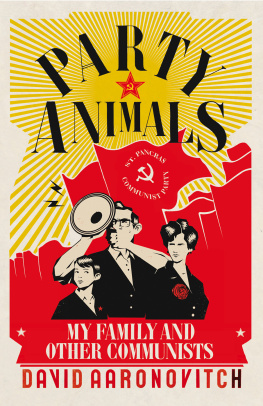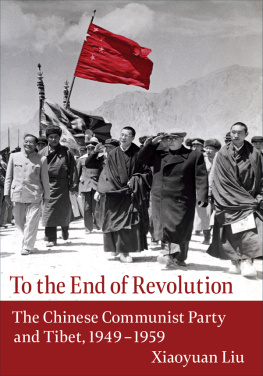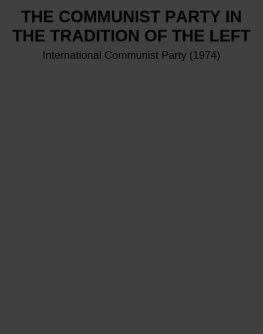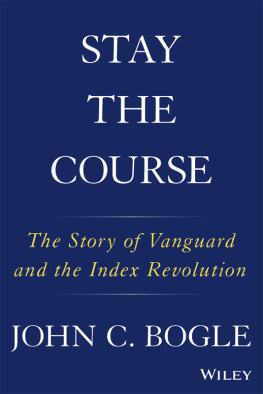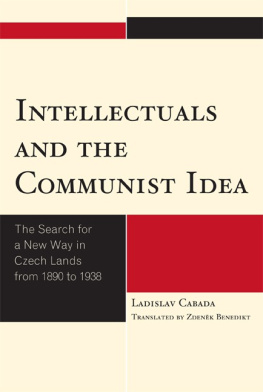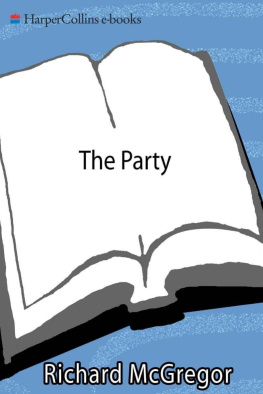PREFACE
What isor wasthe communist party? Political scientists and historians have produced a rich and extensive literature on individual parties. Thanks to this scholarship, we have both provocative theories and painstaking analyses covering the evolution and organization of nearly every communist party in the world. These studies range from such behemoths as the Communist Party of the Soviet Union and the Chinese Communist Party to much smaller, though no less interesting, parties such as the Albanian Party of Labor and the Mongolian Peoples Revolutionary Party. Yet, there are virtually no comprehensive studies of the communist party overall. This is surprising. In the twentieth century, the communist party was one of the two most influential party institutions in the world. It was the primary challenger to the liberal-democratic party. Communist leaders ruled huge parts of the globe and demanded the attention of hundreds of millions of people.
In this book, I seek to fill this gap through a systematic examination of this unique institution. I have two goals. The first is to provide an interpretive political history of the partys evolution over long periods and in vastly diverse settings. Despite the similarities in their names and shared beliefs, communist parties in countries like Germany, the United States, North Korea, and Cuba differed in fundamental ways. They also changed over time. My second goal is to offer a cohesive argument about why these parties took so many different forms. I contend that these differences were driven by their leaders choices about a recurring theme: the relationship between the idea of the revolutionary party and the need for an effective party organization. Without compelling ideas, I argue, these parties would have had few followers, and without coherent organizations, they would have fallen apart.
In structuring my account, I have deliberately sought to speak to both scholars and general readers. I hope that political scientists and historians who specialize in one part of the world will find my analysis of the global evolution of the communist party useful for comparing their cases with those in other regions. Naturally, given the scope of my study, I have not been able to cover the cases of every party or every period in the communist era. Additionally, I hope that general readers will find this study to be a provocative introduction to one of the most significant political institutions of modern times. I have avoided jargon and limited endnotes to primary sources and statistical sources (wherever possible in English). Rather than providing an exhaustive bibliography, I have prepared a list of suggested English-language readings that should help the reader begin to explore my topic.
This book is the product of many years of studying, writing, and teaching about world communism. Many people have played a role in its gestation. In the early stages of my career, I was fortunate to encounter and be inspired by many of the foremost thinkers in the field that was then known as comparative communism: Cyril Black, George Breslauer, Stephen Cohen, Gregory Grossman, Andrew Janos, Ken Jowitt, Richard L wenthal, Norman Naimark, Robert Tucker, Richard Ullman, and Dale Vree.
In writing this book, I have benefited from the advice, generosity, and encouragement of numerous people. I am indebted to those who read and commented on significant segments of the manuscript: George Breslauer, Lowell Dittmer, Graeme Gill, Michel Hockx, Victoria Tin-bor Hui, Lionel Jensen, George Liber, Stephen Lovell, Semion Lyandres, Alex Martin, and Maria Rogacheva.




![Communist Party of PeruCommunist Party of Peru - Shining - The Collected Works of the Communist Party of Peru. 1968-1999 [Warning: Hate Speech and Negationism]](/uploads/posts/book/267146/thumbs/communist-party-of-perucommunist-party-of-peru.jpg)
